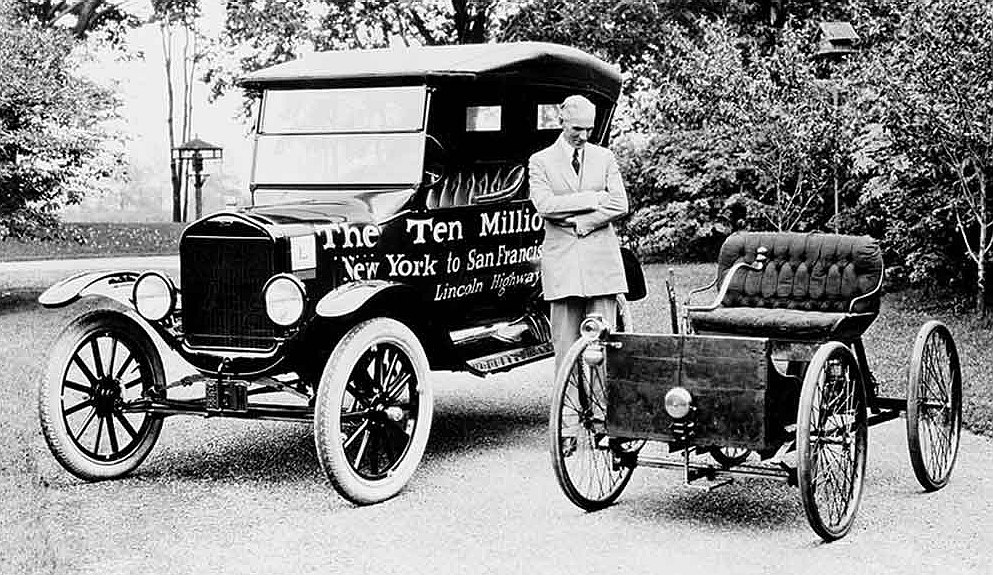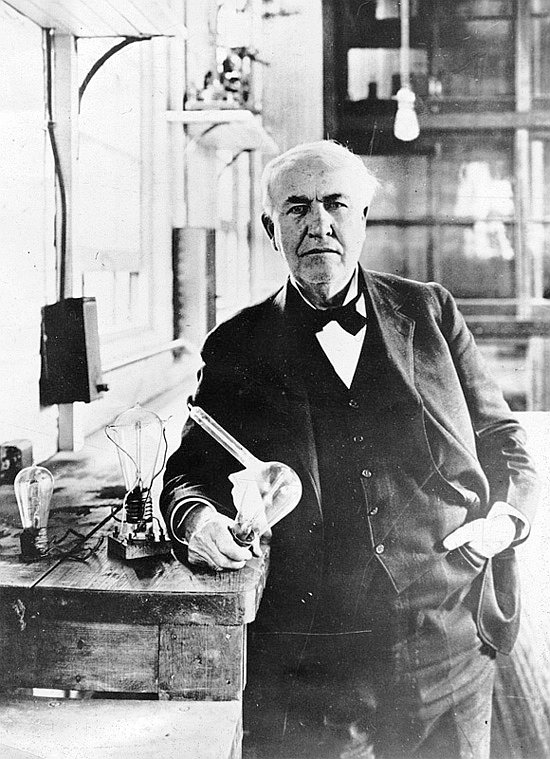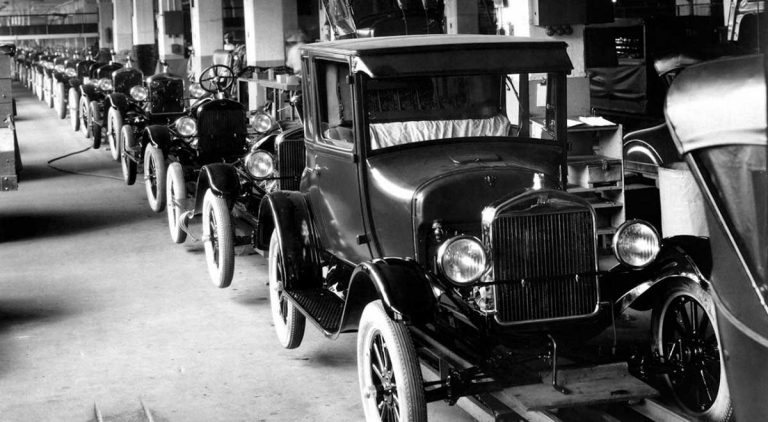|
FLATPACK LOW COST EV GRIDS
Please use our A-Z INDEX to navigate this site where page links may lead to other sites, or see HOME
|
|
|
DUAL
FUEL FORD MODEL T - Henry Ford's engineering team were aware of the pitfalls that caused automobiles of that era to be unreliable. The simple 20hp gasoline four cylinder (2.9 liter) engine was
designed to be able to burn gasoline, kerosene, or ethanol and to be easy to repair. The engine was made so it could use fuels in common use in rural areas.
With mass production assembly lines the build time for a Model T was reduced from 12.5 hours to 93 minutes by 1914. The price of the Model T tumbled from the hand built cost of $825 in 1908 down to a mass produced cost of $360 by 1916.
PROFITABLE
EV SERVICE STATIONS
The same can probably be said of plug-in charging points at locations other than as a spur to a domestic supply. Not that there are many of those about in 2021, around 280,000 - to service the EU's motor vehicle fleet of 308 million vehicles, made up of 268 million cars and 40 million commercial vehicles. Less than 1/1,000th of what is needed.
The secret to reducing costs and making products available to every person at affordable prices, is the mass production of standardized components. Henry Ford could have told you that in 1910.
The secret to providing a network of smart service stations for EVs, is the same: Mass Production. Because the world is going to need hundreds of thousands of Smartnetô (like) service facilities, to replace their petrol/diesel equivalents.
HOW MANY ?
As of 2016, there were approximately 111,100 such establishments across the United States. In 2021 refiners own less than 5% of the (approx) 150,000 retail stations. Interestingly, the majority of branded stations are owned and operated by independent retailers licensed to represent that brand, by way of franchising.
By the end of 2018, ownership of motor vehicles in China reached 327 million units including 240 million cars, and accordingly there were up to 110,000 filling stations and at least 9,000 natural gas stations
The combined total for Europe amounted to around 138,000 (some countries only have figures for 2016 and 2017). Italy had the most petrol stations in 2019, with 21,700 operational and multi-product service stations. Germany, which was home to some 14,500 forecourts.
India had 60,799 petrol stations as of November 2017. In 2019 Brazil had around 41,000 stations. In Japan, the number dropped to 40,357 at the end of 2009.
There were about 25,000 gas stations in the Russian Federation in 2011.
Mexico had more than 13,000 stations in 2020. In 2016 Canada had almost 12,000 or about three stations for every 9,000 people.
In the UK @ 2021, there are 8,380 conventional filling stations.
Australia has a low 6,400 service stations.
That's over half a million (604,937) service stations for these example countries. Meaning, that we need to install some 42,200 service stations globally every year from 2021, until 2035, to be able to displace petroleum fuels.
That
should give us 15 years of zero emissions to seek to contain global warming.
HOW DO WE MASS PRODUCE EV REFUELLING STATIONS ?
The only way to mass produce 600,000 buildings in 14 years is as flat-packs. Flat-packed housing is around one fifth the cost of regular houses.
You cannot get a patent on flat packed service stations, but they are design protected, by copyright and other proprietary know-how, and of course any patent technology incorporated.
HOW MUCH REVENUE ?
This is where things start to get sticky. Despite the Paris Agreement and UN aim for an international circular economy, Governments that have overspent paper money, will be seeking to claw in as much revenue as they can, but will have lost out on $billions in taxes levied on fossil fuels. You can bet that countries will be looking to wade into renewables, in the process hiking up zero emission motoring costs - just as soon as they can and not look bad at election time.
Currently, the federal government levies a $0.184 per gallon tax on gasoline. In addition, state and local governments levy an average gas tax per gallon of about $0.35. This is an average combined rate of about $0.53 a gallon.
In
the UK, Fuel Excise Duty (FED) is a tax added to the price of fuel before it is
sold to the public. The duty applies to all hydrocarbon based fuels including petrol, diesel, biodiesel, and liquefied petroleum gas (LPG) that is sold for use by vehicles licensed for road use in the UK.
THOMAS ALVA EDISON - Henry Ford worked for the famous inventor, being nurtured and encouraged to follow his dreams as to mass production of automobiles. The secret of development is to be persistent. Eventually, you will find a way to make light from electricity.
$112
BILLION - The United States is a country that runs predominantly on cars, and as such, there is a robust industry of gas stations selling fuel for motor vehicles. Output for the sector has risen to levels higher than before the 2008 financial crisis, with over $112 billion U.S. dollars recorded for 2018. During this past decade, gasoline and diesel fuel were the most common fuels sold.
LINKS & REFERENCE
https://
Please use our A-Z INDEX to navigate this site
Copyright © Climate Change Trust & Universal Smart Batteries 2021. Solar Studios, BN271RF, United Kingdom.
|


